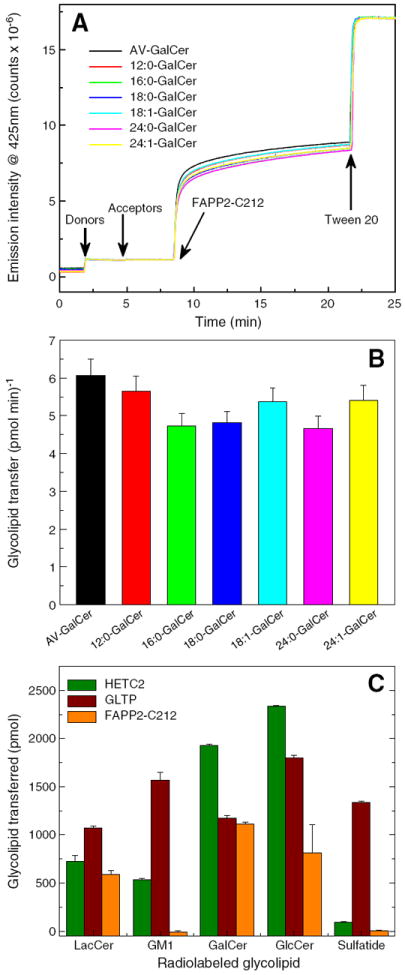Fig. 4.

Glycolipid transfer activity of FAPP2-C212. Förster resonance energy transfer involving fluorescently-labeled glycolipid (AV-GalCer) and phospholipid (perylenoyl-PC) enabled assessment of glycolipid intervesicular transfer by FAPP2-C212. AV-GalCer was excited at 370 nm and emission wasmonitored at 425 nm. Additional details are provided in the Materials and methods section. A) Competition effect exerted by GalCer species with different homogenous acyl chains on AV-GalCer transfer by FAPP2-C212. B) Initial transfer rates for AV-GalCer measured in the presence of competitor GalCer species with different homogenous acyl chains. C) FAPP2-C212 glycolipid specificity. Glycolipid transfer activitywas measured at 30 °C using POPC donor vesicles containing radiolabeled glycolipid (2 mole%) and 10 mole% phosphatidic acid mixed with POPC acceptor vesicles (10-fold excess) and FAPP2-GLTP (0.5 μg). Recovery of acceptor vesicles eluting through DEAE minicolumns enabled quantitation of glycolipid transfer by liquid scintillation counting as described in the Materials and methods section.
